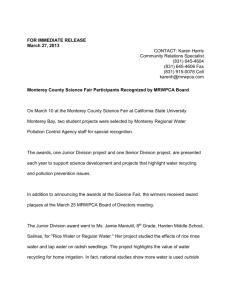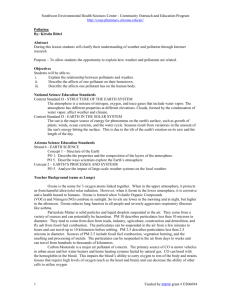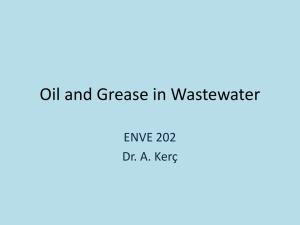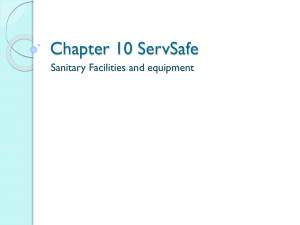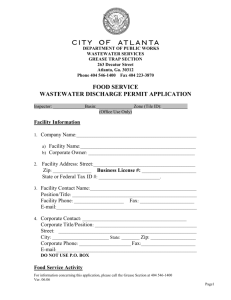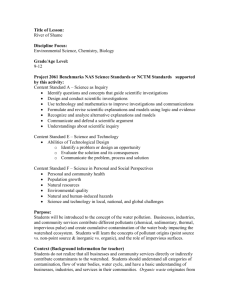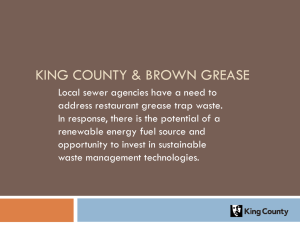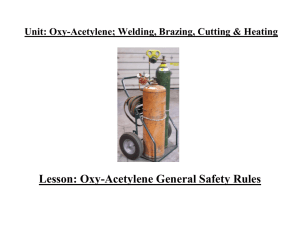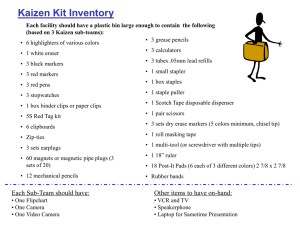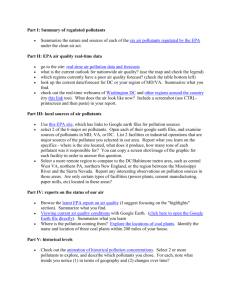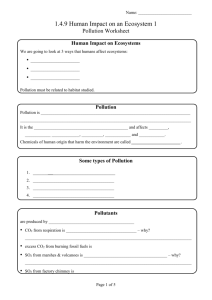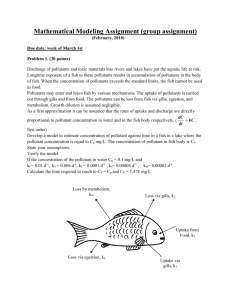Guidance for Interpreting Narrative Local Limits Contained in
advertisement
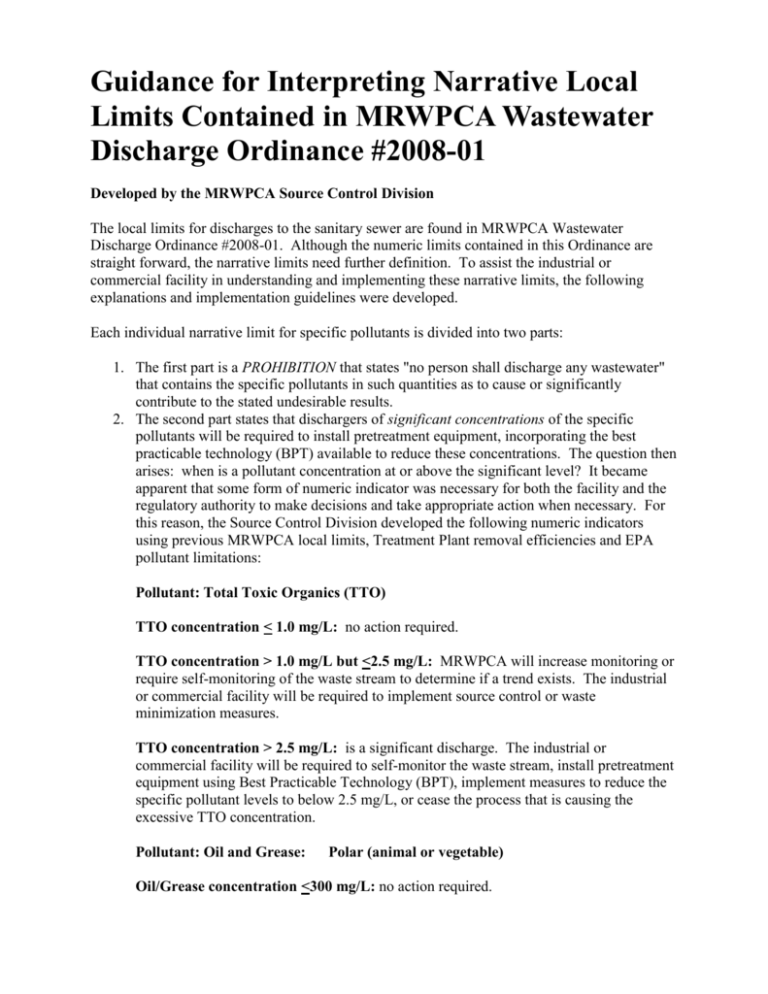
Guidance for Interpreting Narrative Local Limits Contained in MRWPCA Wastewater Discharge Ordinance #2008-01 Developed by the MRWPCA Source Control Division The local limits for discharges to the sanitary sewer are found in MRWPCA Wastewater Discharge Ordinance #2008-01. Although the numeric limits contained in this Ordinance are straight forward, the narrative limits need further definition. To assist the industrial or commercial facility in understanding and implementing these narrative limits, the following explanations and implementation guidelines were developed. Each individual narrative limit for specific pollutants is divided into two parts: 1. The first part is a PROHIBITION that states "no person shall discharge any wastewater" that contains the specific pollutants in such quantities as to cause or significantly contribute to the stated undesirable results. 2. The second part states that dischargers of significant concentrations of the specific pollutants will be required to install pretreatment equipment, incorporating the best practicable technology (BPT) available to reduce these concentrations. The question then arises: when is a pollutant concentration at or above the significant level? It became apparent that some form of numeric indicator was necessary for both the facility and the regulatory authority to make decisions and take appropriate action when necessary. For this reason, the Source Control Division developed the following numeric indicators using previous MRWPCA local limits, Treatment Plant removal efficiencies and EPA pollutant limitations: Pollutant: Total Toxic Organics (TTO) TTO concentration < 1.0 mg/L: no action required. TTO concentration > 1.0 mg/L but <2.5 mg/L: MRWPCA will increase monitoring or require self-monitoring of the waste stream to determine if a trend exists. The industrial or commercial facility will be required to implement source control or waste minimization measures. TTO concentration > 2.5 mg/L: is a significant discharge. The industrial or commercial facility will be required to self-monitor the waste stream, install pretreatment equipment using Best Practicable Technology (BPT), implement measures to reduce the specific pollutant levels to below 2.5 mg/L, or cease the process that is causing the excessive TTO concentration. Pollutant: Oil and Grease: Polar (animal or vegetable) Oil/Grease concentration <300 mg/L: no action required. 3. Oil/Grease concentration >300 mg/L but <450 mg/L: MRWPCA will increase monitoring or require self-monitoring of the waste stream to determine if a trend exists. The industrial or commercial facility will be required to implement source control or waste minimization measures. Oil/Grease concentration >450 mg/L: is a significant discharge. The industrial or commercial facility will be required to self-monitor the waste stream, install pretreatment equipment using Best Practicable Technology (BPT), implement measures to reduce the specific pollutant level to below 450 mg/L, or cease the process that is causing the excessive animal/vegetable oil and grease concentration. Pollutant: Oil and Grease: Non-polar (petroleum or mineral) Oil/Grease concentration <100 mg/L: no action required. Oil/Grease concentration >100 mg/L but <150 mg/L: MRWPCA will increase monitoring or require self-monitoring of the waste stream to determine if a trend exists. The industrial or commercial facility will be required to implement source control or waste minimization measures. Oil/Grease concentration: >150 mg/L: is a significant discharge. The industrial or commercial facility will be required to self-monitor the waste stream, install pretreatment equipment using Best Practicable Technology (BPT), implement measures to reduce the specific pollutant level below 150 mg/L, or cease the process that is causing the excessive petroleum/mineral oil and grease concentration. Pollutant: Toxic Inorganics, Ammonia, BOD, TSS To date, no numeric guidelines have been developed for the narrative limits dealing with significant dischargers of toxic inorganic pollutants, ammonia or BOD/TSS. In the future, numeric guidelines may be developed to facilitate wastewater reclamation and reuse, or to alleviate problems being caused by the specific pollutants.
